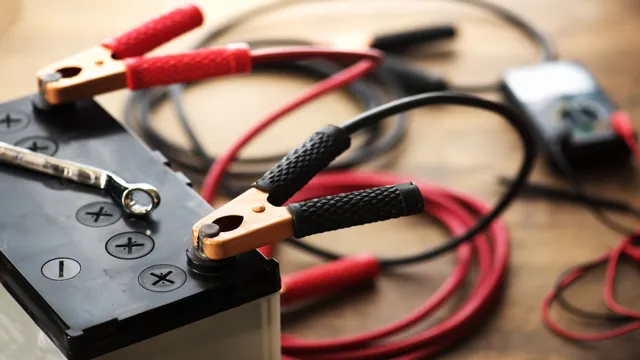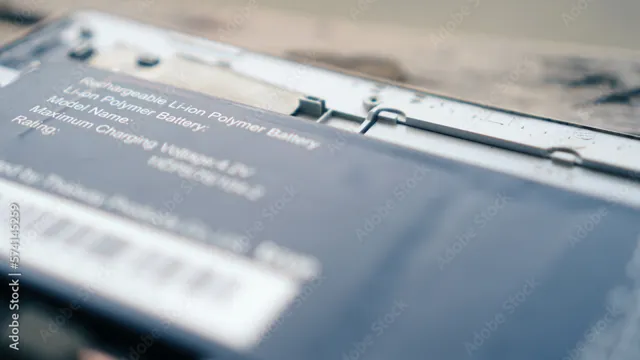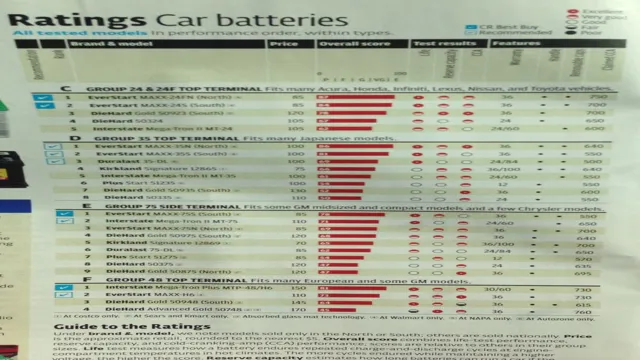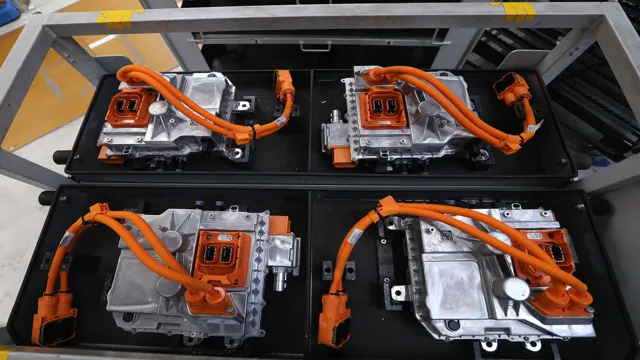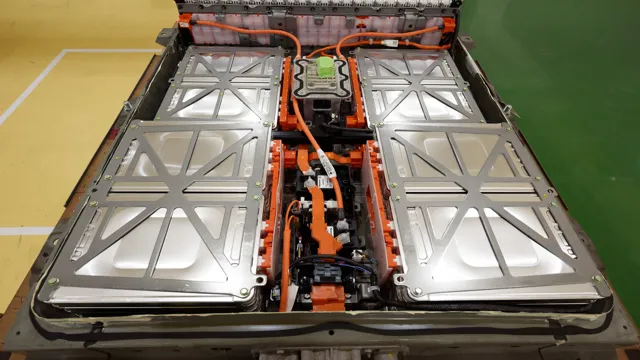Revive Your Dead Car Battery Without Electricity: Step-by-Step Guide to Charging Your Car Battery in Any Situation
Let’s face it, being stranded with a dead car battery can be a frustrating and stressful experience, especially when there is no electricity outlet around. However, charging a car battery without using electricity is possible, and surprisingly effective. Think about it, if you are out camping or in a remote location where electrical power is hard to come by, there are still alternative ways to jumpstart a car battery.
In this article, we will explore the different methods you can try to get your vehicle back on the road without electricity. From using a hand-crank charger to jumpstarting the car using water, we will delve into some interesting and unique approaches. So let’s dive in and learn how to revive your car’s battery without the need for electricity.
Jumpstart Your Car
If you ever find yourself with a dead car battery and no access to electricity, don’t worry! There are still ways to charge your battery and get back on the road. One method is to jumpstart your car with the help of another vehicle. To do this, you’ll need a set of jumper cables and a willing friend with a working car.
First, connect the red (positive) jumper cable to the positive terminal on your dead battery and then to the positive terminal on the working car’s battery. Next, attach the black (negative) cable to the negative terminal on the working car’s battery and then to an unpainted metal surface on your car, such as a bolt or bracket. Make sure both cars are turned off and the cables are securely attached before starting the working car.
Let it run for a few minutes to give your dead battery a chance to charge, then try turning on your car. If it doesn’t start, wait a few more minutes before trying again or seek additional help. In any case, remember to thank your helper and get your battery checked as soon as possible to avoid future problems.
Step-by-step guide to jumpstarting car battery
Jumpstarting a car battery can be a lifesaver when you’re in a rush or stranded in a remote area. Here’s a step-by-step guide on how to revive your car battery. Firstly, gather a pair of functioning jumper cables and park the two vehicles closely.
You should ensure that both engines are turned off, the parking brakes engaged, and all electrical appliances turned off. Then connect the terminals starting with red, which goes to the positive terminal of the dead battery, followed by the other end to the positive terminal of the good battery. Next, connect the black jumper cable to the negative terminal of the good battery and attach the other end on any unpainted metal surface.
Now turn on the engine of the functioning car and allow it to run for a couple of minutes. You should then turn on your car, and if it successfully starts, disconnect the negative cable followed by the positive cable. Remember that jumpstarting can be risky, so wear gloves and protective glasses, and never allow the two remaining ends of the jumper cables to touch each other as they could lead to sparks and dangerous situations.
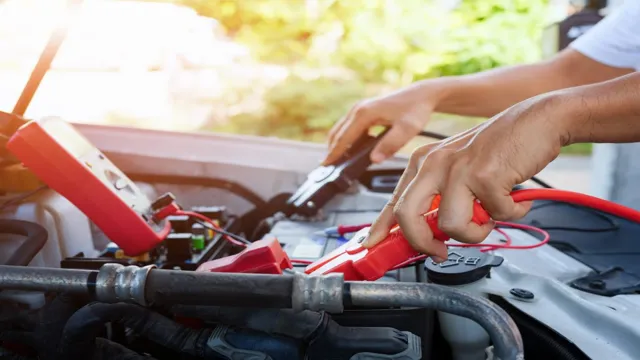
What you need: another car, jumper cables
If you find yourself stranded with a dead battery, don’t panic! All you need is another car with a good battery and a set of jumper cables to jumpstart your car. This process can be simple and easy if you follow a few steps. First, park the car with the good battery next to your car with the dead battery.
Then, connect the red jumper cable to the positive terminal of the good battery, and attach the other end to the positive terminal of the dead battery. Next, connect the black jumper cable to the negative terminal of the good battery, and attach the other end to an unpainted metal surface on the engine block of the dead car. Finally, start the engine of the good car and let it run for a few minutes while it charges the dead battery.
After a few minutes, try to start the engine of the dead car. If it starts, remove the jumper cables in the reverse order that you connected them. If it doesn’t start, wait a few more minutes and try again.
Remember to keep both cars turned off while connecting and disconnecting the cables to avoid any accidents. With a little bit of patience and a friend with a good car, you can jumpstart your car and be back on the road in no time.
Push-Start Your Car
Have you ever been stuck with a drained car battery and no access to electricity? It can be a frustrating experience, but don’t worry, there’s a solution. You can push-start your car to get it up and running again without the need for an electrical outlet. Here’s how to do it: First, make sure your car is in neutral and its parking brake is off.
Next, gather a few friends to help you push the car. Once you have a bit of momentum, quickly release the clutch and press down on the gas pedal. This should cause the engine to turn over, and with any luck, start running.
If it doesn’t work on the first attempt, keep trying until you build up enough momentum to get the car started. Push-starting your car can be a great solution in an emergency, but be sure to take your car to a mechanic as soon as possible to avoid any further damage to your battery and charging system. Remember, always use caution and be safe when trying to push-start your car.
Don’t hesitate to call for assistance if needed. With these tips, you’ll be able to get your car up and running again, even if you’re in a place without electricity.
Procedure for a manual transmission car
Push-starting a manual transmission car can be a lifesaver when the battery is dead and there are no other alternatives available. But how exactly do you do it? Firstly, make sure your car is in the second gear. Then, get someone to help by pushing the car to a reasonable speed, around 10-20 mph.
Next, step on the clutch while simultaneously turning on the ignition. Make sure not to release the clutch until the engine has fully turned over. If it doesn’t work on the first try, repeat the process a few times until the engine catches and starts running.
Remember, this process should only be done in emergency situations, and ideally, a professional should fix any underlying issues with the battery or ignition system. Push-starting a manual transmission car can be a quick solution to a dead battery, but it’s always better to be prepared with jump-start cables or a charged battery to avoid any inconvenience.
Tips for Push-Starting a Car
Push-starting a car can be a handy skill to have in case of a dead battery or a faulty starter. First, make sure the car is in neutral and the parking brake is off. Then, get some friends to help push the car to a decent speed.
Once you’re moving fast enough, release the clutch pedal quickly while simultaneously pressing down on the gas pedal. If you hear the engine turn over, keep pressing the gas pedal until the car starts up. If not, try again until you get the engine to start.
It’s important to keep in mind that push-starting a car can be dangerous, so make sure you have enough space and that everyone involved is aware of what’s happening. With these tips, you’ll be able to get your car started in no time without the need for jumper cables or a tow truck.
Use a Battery Charger
If you find yourself stuck with a dead car battery and no access to electricity, don’t panic. There is still a solution! Using a battery charger can be a great option for charging your car battery without access to an electrical source. A battery charger works by using a chemical process to recharge the battery, so it doesn’t require any other source of power.
Simply connect the charger to the battery and turn it on. The charger will do the rest of the work for you. Once the battery is fully charged, you can disconnect the charger and start your car as usual.
This is a great solution if you don’t have access to an electrical outlet, or if you are in a remote location where electricity is not available. So, don’t let a dead battery ruin your day. Grab a battery charger and get back on the road in no time!
How to use a battery charger
Using a battery charger is a simple and straightforward process. First, make sure you have the correct charger for your particular battery. This is important as using the wrong type of charger can damage your battery, or even cause it to explode.
Once you have the correct charger, connect the positive and negative leads to the corresponding terminals on the battery. Some chargers may have clips, while others may have posts. Make sure the connections are secure and tight.
Next, plug your charger into an electrical outlet and turn it on. Most chargers have a “charge” indicator light that will illuminate when the battery is charging. It’s important to monitor the battery while it’s charging.
Once the battery is fully charged, unplug the charger from the outlet and remove the leads from the battery terminals. Using a battery charger is an essential skill for anyone who owns a vehicle or any electronic device that uses rechargeable batteries. By following the proper steps and using the right charger for your battery, you can ensure that your battery remains in optimal condition.
Charging time and safety precautions
Using a battery charger to charge your device is one of the most reliable and convenient ways to recharge your battery effectively. It is essential to make sure that the charger being used is compatible with the device that needs charging. Most battery chargers have LED lights that indicate when the battery is fully charged, and some devices even have a built-in charging cut-off feature that reduces the risk of overcharging.
Overcharging can lead to battery damage and even explosions and fires, so it’s crucial to take the necessary safety precautions when using a battery charger. It is always best to follow the manufacturer’s instructions on charging time and to avoid leaving the device charging unattended for an extended period. By using a battery charger and following safety precautions, you can ensure the longevity of your device and keep yourself safe from potential hazards.
Takeaway Tips
If you find yourself in a situation where you need to charge your car battery, but there’s no electricity available, don’t worry. There are ways to accomplish this task without relying on an electrical outlet. The first method is to use another car’s battery to jump-start your own.
Ensure that the other vehicle’s battery is fully charged and the engine is turned off before you connect the cables. Make sure to follow the correct order in attaching the cables and use protective gloves and glasses. Another way to charge a car battery without electricity is to use a portable battery charger.
These chargers are easy to use and can be purchased at most auto supply stores. Just connect the charger to the battery and let it charge for a few hours. It’s important to note that these chargers must be used according to the manufacturer’s instructions.
So, next time you find yourself stranded with a dead car battery, use these tips to get back on the road.
Conclusion
Even in a world without electricity, you can still be in charge of your car battery. With a little bit of creativity and resourcefulness, you can find alternative ways to keep your battery charged and your car running smoothly. So, the next time you find yourself stuck without electricity, don’t panic, just remember that you have the power to take charge.
“
FAQs
What are some common reasons behind a car battery running out of charge?
Some common reasons include leaving headlights or interior lights on for an extended period of time, a faulty alternator, extreme cold temperatures, or simply an old battery that needs to be replaced.
Can a car battery be charged without electricity?
Yes, a car battery can be charged without electricity by using a portable jump starter, a solar battery charger, or a hand-crank charger.
How long does it take to charge a car battery using a battery charger?
The time it takes to charge a car battery using a battery charger depends on the battery’s size, type, and condition, as well as the power output of the charger. Generally, it can take anywhere from 30 minutes to several hours to fully charge a car battery.
Is it safe to charge a car battery while the vehicle is running?
No, it is not safe to charge a car battery while the vehicle is running, as it can cause damage to the battery, alternator, and other electrical components. It is best to turn the vehicle off and disconnect the battery before charging it.

